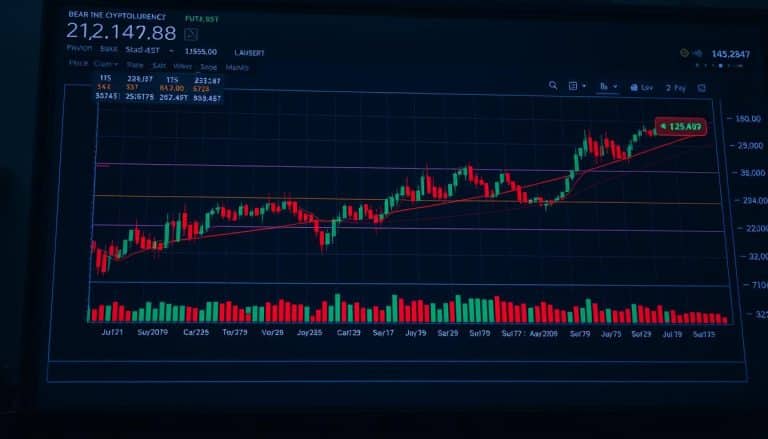Unveiling Algorithmic Stablecoins Mechanics
If you’ve ever wondered about the mechanics behind algorithmic stablecoins, you’re in the right place. These innovative digital assets aim to maintain price stability through algorithmic adjustments, rather than being pegged to traditional fiat currencies like the US dollar. Understanding how these algorithms work is crucial for grasping the dynamics of this emerging sector.
In this article, you’ll delve into the intricate mechanisms that govern algorithmic stablecoins. From supply adjustments to collateralization ratios, each element plays a vital role in ensuring the stability of these digital assets. By exploring the mechanics behind algorithmic stablecoins, you’ll gain valuable insights into the future of decentralized finance and the potential impact on the broader financial landscape.
Exploring Algorithmic Stablecoins Mechanics
Understanding the mechanics behind algorithmic stablecoins is crucial in grasping the dynamics of these digital assets. These stablecoins operate based on algorithms that automatically adjust their supply and collateralization ratios to maintain price stability without being pegged to traditional fiat currencies like the US dollar.
- Supply Adjustments
Algorithmic stablecoins utilize supply adjustments to regulate their token supply dynamically. When the price of the stablecoin deviates from the target price, the algorithm automatically adjusts the supply. For example, if the price is above the target, new coins are minted. Conversely, if the price is below the target, coins are burned to reduce the supply. - Collateralization Ratios
Maintaining a proper collateralization ratio is essential for algorithmic stablecoins. These ratios determine the amount of collateral backing the stablecoin’s value. The algorithm ensures sufficient collateral is held to support the stablecoin’s pegged value. If the collateralization ratio falls below a specified threshold, mechanisms are triggered to restore the ratio to its target level.
By exploring these intricate mechanisms governing algorithmic stablecoins, you can gain valuable insights into the innovative approaches driving decentralized finance. These mechanisms play a significant role in ensuring the stability and sustainability of algorithmic stablecoins in the evolving landscape of digital assets.
Conclusion
Understanding the intricate mechanics behind algorithmic stablecoins is essential for navigating the evolving landscape of decentralized finance. By grasping the algorithms governing these digital assets, you can gain valuable insights into their unique approach to maintaining price stability. The dynamic nature of supply adjustments and collateralization ratios plays a crucial role in ensuring the stability and sustainability of algorithmic stablecoins. As you delve deeper into this emerging sector, remember that these mechanisms are key to supporting the pegged value of these innovative digital assets. Stay informed and continue exploring the potential impact of algorithmic stablecoins on the broader financial ecosystem as decentralized finance continues to reshape the future of finance.
Frequently Asked Questions
What are algorithmic stablecoins?
Algorithmic stablecoins are digital assets designed to maintain price stability through algorithmic mechanisms rather than being pegged to traditional fiat currencies like the US dollar.
How do algorithmic stablecoins ensure stability?
Algorithmic stablecoins utilize supply adjustments to regulate their token supply dynamically, helping maintain price stability within the ecosystem.
What is the significance of collateralization ratios in algorithmic stablecoins?
Collateralization ratios are crucial for algorithmic stablecoins as they ensure proper backing by assets, supporting the stablecoin’s pegged value and overall stability in the market.







 Bitcoin
Bitcoin  Ethereum
Ethereum  Tether
Tether  XRP
XRP  USDC
USDC  Wrapped SOL
Wrapped SOL  TRON
TRON  Lido Staked Ether
Lido Staked Ether  Dogecoin
Dogecoin  Figure Heloc
Figure Heloc  Cardano
Cardano  WhiteBIT Coin
WhiteBIT Coin  Wrapped stETH
Wrapped stETH  Bitcoin Cash
Bitcoin Cash  Wrapped Bitcoin
Wrapped Bitcoin  USDS
USDS  Binance Bridged USDT (BNB Smart Chain)
Binance Bridged USDT (BNB Smart Chain)  Chainlink
Chainlink  Wrapped eETH
Wrapped eETH  Monero
Monero  WETH
WETH  Stellar
Stellar  LEO Token
LEO Token  Hyperliquid
Hyperliquid  Zcash
Zcash  Ethena USDe
Ethena USDe  Coinbase Wrapped BTC
Coinbase Wrapped BTC  Litecoin
Litecoin  Sui
Sui  Avalanche
Avalanche  sUSDS
sUSDS  Hedera
Hedera  Shiba Inu
Shiba Inu  Dai
Dai  USDT0
USDT0  PayPal USD
PayPal USD  Mantle
Mantle  Toncoin
Toncoin  World Liberty Financial
World Liberty Financial  Cronos
Cronos  Ethena Staked USDe
Ethena Staked USDe  Uniswap
Uniswap  Polkadot
Polkadot  MemeCore
MemeCore  Canton
Canton  USD1
USD1  Aave
Aave  Rain
Rain